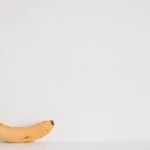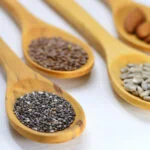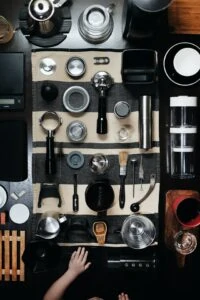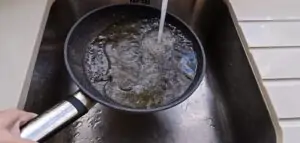Sage often comes in Thanksgiving food, or as sage bundles for burning as a spiritual practice. It’s name describes its benefit in either realm, as this herb is known to enlighten your mind, reducing your risk for Alzheimer’s disease, and helping you to clear your mind and body after a rich and heavy meal.
What Is Sage?
Sage is an Herb with a strong earthy flavor and aroma. For culinary purposes you would use common sage, also known as Salvia officinalis. This woody shrub is a member of the mint family. It’s a native to the Mediterranean, and grows year after year around the word.
It’s oblong leaves are fuzzy, green to grayish blue, or even cream-colored depending on the sage variety.
What Does Sage Taste Like?
Culinary sage, common sage, or Salvia officinalis, tastes a little citrusy, and mainly dusty and bitter.
It’s overall dryness seems to soak up the rainless earth where it typically grows — eastern alpine deserts where rattlesnakes live, and rivers recede significantly during hot summers: northwestern Mexico, southwestern United States, Southern California, Baja California, Sonoran and Mojave deserts.
Fresh Sage vs Dried Sage
Whole, fresh sage leaves pack all the flavor notes and are the most bitter. They’re great in slow-cooked dishes, and removed before serving (that’s what they say, but I feel tingly when I find one in my helping).
Toss a couple of fresh sage leaves in with onions and garlic and caramelize. A little frying action crisps up the leaves wonderfully.
Rubbed sage is the dried sage leaves, massaged and pressed to their crumbly, webby leftovers that preserve the earthy notes and are lighter in flavor all around. Rubbed sage is slightly less potent than ground or powdered sage. Use in the same dishes, and more rubbed sage than powdered to match the strength you’re looking for if using as a replacement.
Powdered dried sage tastes mustier than fresh sage, less bitter, and looses its brightness as it sits. It’s a consistent, milder taste that I prefer in breads and pastry fillings. Store in an airtight container in a cool, dark cabinet, and use often over no more than six months in dressing dressing (the dressing for your dressing?), soups if you don’t have fresh sage, and in baking.
Culinary Uses of Sage
I don’t think white bean soup should go without a good couple of fresh sage leaves, or dashes of dried sage powder.
Sage’s mind play often comes up in the beverage scene. “Herby booze,” one speaks up in one of my favorite newsletters, includes fresh garden sage along with a bunch of other herbs (bay, savory, thyme, tarragon, hyssop, fennel), spices (coriander or anise), and lemon rind. Spill the basement-steeped herb stuff into vermouth or white wine, they say, or — my vibe — ice and seltzer (maybe a wild combo with Pisco hard seltzer?).
I feel sage’s equal citrus flavor and dull bitterness charm plain, starchy and protein-rich foods like white beans (always), potatoes, chicken, and pasta and other flour-based foods.
British dumplings is one suggestion a food friend mentioned first. Flour, butter, water, and fresh sage.
Plus, butternut squash tortellini with brown butter and crispy sage sauce. And then a tangerine and sage negroni (sage spiced campari) that you won’t ever forget.
Magical and medicinal sage tea in France and China, Germany’s sage-flavored pork sausage, Americans’ sage-laden Thanksgiving recipes. Many cuisines use it, especially to aid in digestion after a big meal, or as a spice used right on in with heavy, fatty, umami meals, maybe to cool a slaving belly in the act, but definitely for the flavor.
Sage is used in many forms, fresh and whole, ground or powdered, and as rubbed sage.
Sage Substitutes
Since Salvia officinalis is from the mint and marjoram family, so substitute it if you like with other herbs that hold similar characteristics to this family.
Mint family members
Other herbs that are cousins to sage and make good substitutes are:
- Marjoram can be used fresh or dried in the same amount as sage, and is best in dishes as a garnish or at least tossed in near the last few minutes of cooking since it flavor disappears quickly throughout the cooking process
- Thyme‘s bright flavor replicant of the mint family makes it a good substitute for sage, especially in pasta sauce and with vegetables. Thyme’s brightness tends to enhance saltiness, so go shy on the salt and taste as you go. Substitute 1:1.
- Mint is brighter and cooler than sage, and works best as a sage replacement in cocktails and pestos. Substitute in equal amounts.
Not in the mint family, but good
- Savory is used in herbes de Provence, and comes in two varieties — winter, which tastes bitter like sage, and summer savory, that has a peppery flavor similar to thyme. Substitute sage with an equal form and amount of savory.
- Oregano has a similar bitter flavor to sage, and warmly combines flavors. Substitute dry or fresh sage with dry or fresh oregano, in a ratio of 1:1.
- Rosemary is stronger than sage, but matches many of sage’s bright flavor notes. Rosemary should be used in lesser amounts than sage as a replacement, for example 1/3 teaspoon rosemary as a substitute for every 1 teaspoon of sage. Rosemary is great with poultry, steak, soups, and bakes.
Where to Buy Common Sage
Of course, only high quality sources of fresh sage will give the best flavor profile. Sage grows wild in many dry parts of the world, so go outside. Or, you can often find fresh sage in clamshells in the salad section of most grocery stores, and dried sage and rubbed sage in small bottles in the spice aisle.
Of course, dried sage and rubbed sage are readily available online, as well as whole dried leaves for culinary purposes, and you can even order a sage bundle for burning sage in your living room.
Sage and Health
Sage’s name comes from “salvare,” a Latin word that means wellness, wisdom, healing and health. Such good things!
Salvia officinalis is the burning sage smudge used to cleanse and ward off the negative energy.
Herbalists list sage as a cooling herb, and in traditional and complementary medicine, it’s thought to clarify eyesight and mind, maybe for a euphoric look into the future.
Those of us into natural medicines burn dried sage for the aromas through sage smoke, use sage oil, sage extract, and essential oils for the herb’s medicinal properties: blood sugar control, to cure illnesses, calm sore throats, aid in improving mood, to improve memory and maybe even help to avoid Alzheimer’s disease, and sage also helps calm respiratory conditions.
It’s used to support healthy fertility (used in the form of sage essential oil), to dry up secretions like milk production, or phlegm associated with throat infections and colds.
As always, do your own research of peer reviewed studies, take seriously professional medical advice, and listen to our grandparent medical expertise before diving into using Salvia officinalis as a medicine.











